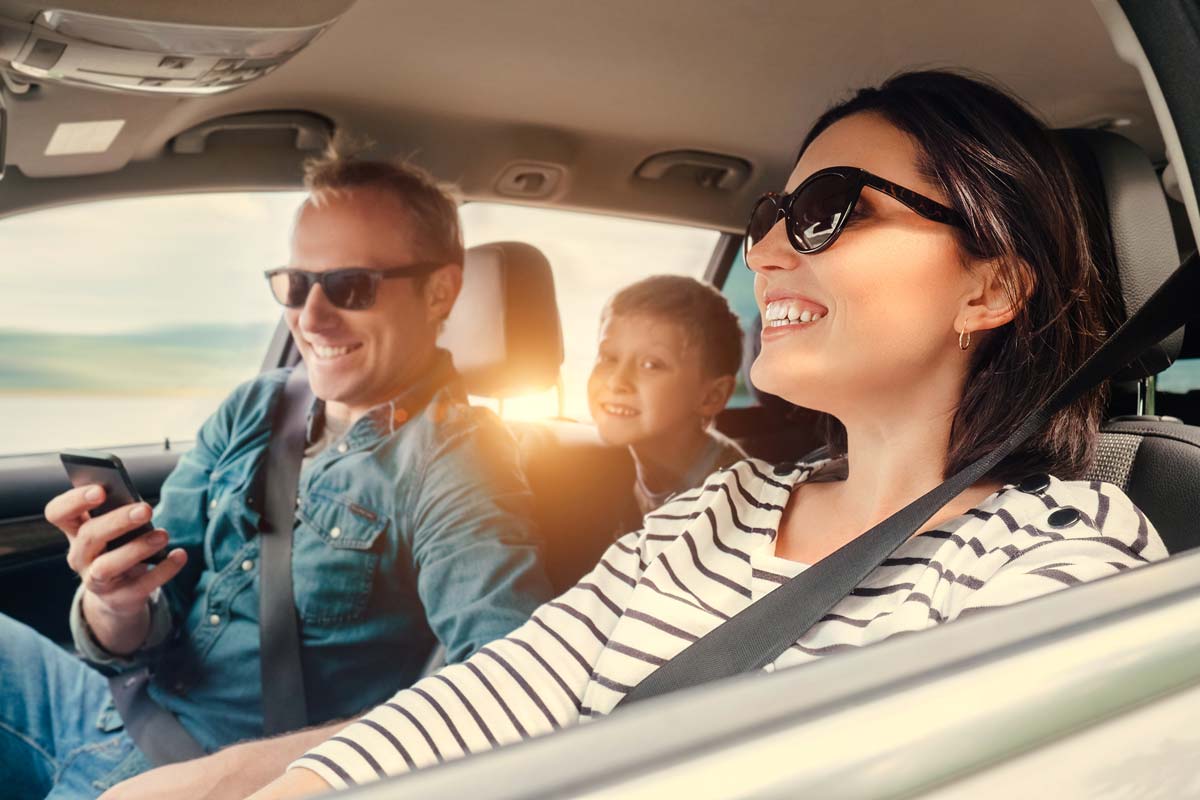Summer is here, and many Americans are itching for a vacation. But is it possible to travel safely right now? Is an airplane really a flying Petri dish to be avoided until the pandemic blows over? Can you take a road trip if it means making rest stops in three different states?
So many questions — but we’ve got answers! Here’s how to enjoy your getaway this summer without compromising on your health and safety.
Check your health
Before heading out to any destination, give yourself a mental COVID-19 screening. Have you been running a fever above 100.4? Have you recently experienced shortness of breath or deep coughing? Do you have reason to believe you’ve been exposed to coronavirus in the last week? If you answer yes to any of these questions, the CDC recommends you stay home.
Check local laws at your destination
Even as some states are seeing a decline in new COVID-19 infections, the virus continues to rage across the country and many states are currently peaking. To help curb the spread, some local governments have enacted strict quarantine laws for visitors entering their state from places that are experiencing a surge in new infections. There are also discrepancies among individual states regarding general coronavirus laws, such as those related to face coverings and public gatherings.
Check the local laws at your destination before setting out on your trip. Also recheck them as you travel since the situation is fluid and laws are constantly changing. It’s also a good idea to familiarize yourself with the rules at rest stops you’ll visit along the way.
Air travel
At first glance, an airplane can seem like a flying tube of germs, but that’s not entirely true.
“Many people think they get sick on an airplane, but the reality is that the air quality on an airplane is actually really good — high amounts of clean outdoor air and all recirculated air pass through a HEPA (High Efficiency Particulate Air) filter,” says Joe Allen, an assistant professor and director of the Healthy Buildings Program at Harvard T.H. Chan School of Public Health.
HEPA filters refresh the circulated air every two to three minutes, and can effectively block more than 99% of airborne microbes.
That travelers are more likely to pick up the virus while waiting in line at airport security, at the boarding gate or in front of the luggage carousel, Allen says.
Airports and airlines are taking steps to minimize the risks of contagion with frequent intensive cleaning and sanitizing of common areas. Planes are fogged with electrostatic disinfectant that sticks to surfaces such as seatbelts, Many airlines are now distributing disinfectant wipes to boarding passengers, and the Transportation Security Administration (TSA) has increased the size of hand sanitizer bottles permissible to bring aboard a plane from 3.4 ounces to 12.
Despite these extra measures, it’s best to continue following standard COVID-19 precautions. Face coverings should be worn at all times, as per CDC recommendations, and it’s a good idea to wipe down high-contact surfaces, like tray tables and armrests. As always, proper hand hygiene should be observed.
Hotel stays
Some states — but not all — have lifted restrictions on hotels and vacation rentals, thereby permitting them to welcome guests again; however, many travelers are understandably wary. To reassure them, several big-name hotel chains are rolling out new programs and procedures, such as Hilton Worldwide’s CleanStay program which features frequent cleaning and contactless check-in. These extra precautions make a hotel stay safer.
If you’re still feeling unsure about spending a night in a hotel or a vacation rental, but your travel plans necessitate an overnight stay, come prepared. Pack a generous supply of cleaning wipes that have an EPA-approved disinfectant, and scrub all high-touch surfaces at the hotel room or rental. This includes all door knobs, faucets, remote controls, light switches, countertops and more.
Rest stops
Lots of vacationing Americans are choosing to travel by car this summer instead of taking to the skies, assuming this mode of transportation is safer than air travel. What many neglect to realize is that by stopping at rest stops in several states, a traveler may come in close contact with hundreds of other travelers while in a germ-infested area.
If you have plans to hit the road, travel safely. Pack lots of disinfectant wipes and an alcohol-based hand sanitizer. Mask up at all rest stops, and don’t forget to keep your distance from other travelers. Use toilet seat covers when available, and wipe down other high-touch areas, like sink faucets, before using. When purchasing takeout food, use contactless payment. Wash your hands vigorously when you’ve finished, and scrub them with sanitizer for an extra measure of protection.
Attractions
Once you’ve arrived at your vacation destination, continue to play it safe. The CDC recommends maintaining a 6-foot distance from other visitors while at an attraction, avoiding crowded parks, wearing a face covering at all times and washing hands with soap and water for at least 20 seconds after using the restroom, before eating and after blowing your nose, coughing or sneezing.
The open road is calling! Before you head out on your summer getaway, though, don’t forget to pack the face coverings, hand sanitizer and disinfectant wipes. Play it safe for a truly memorable summer.



